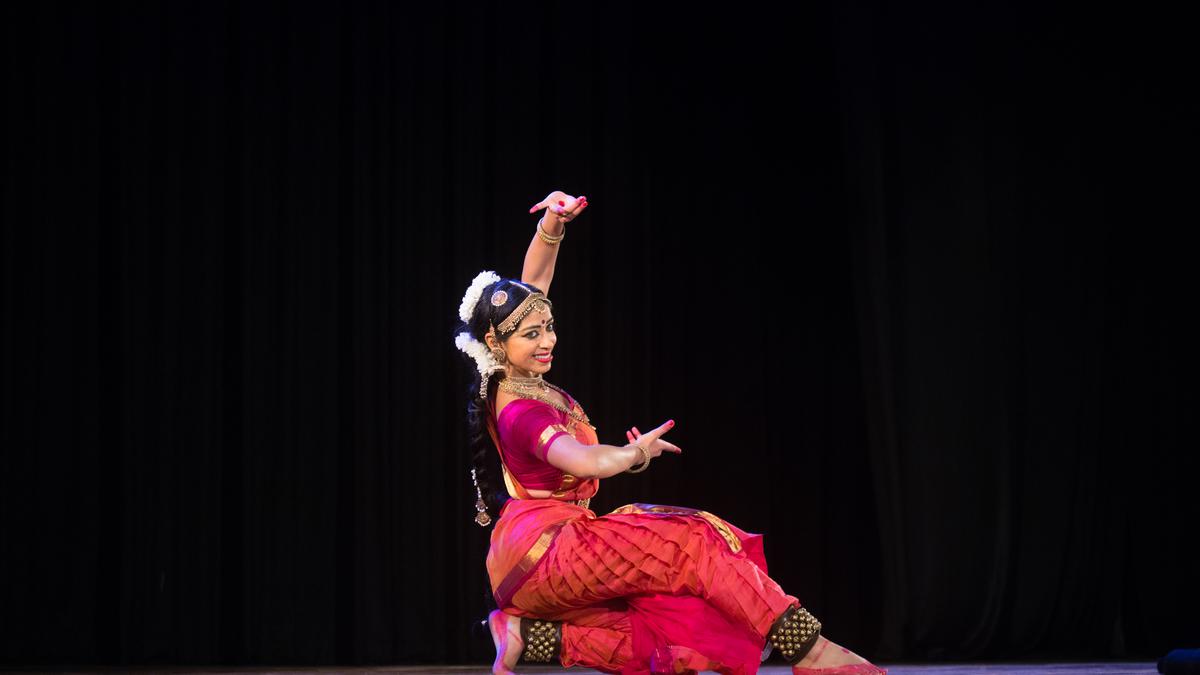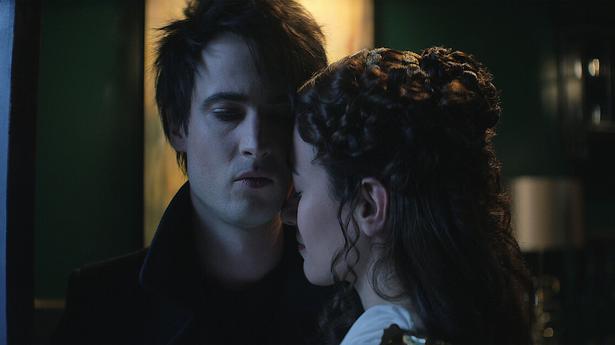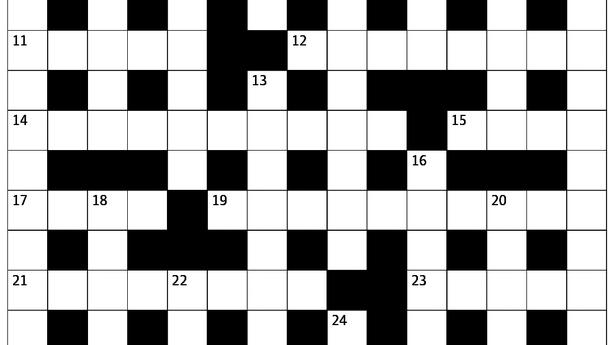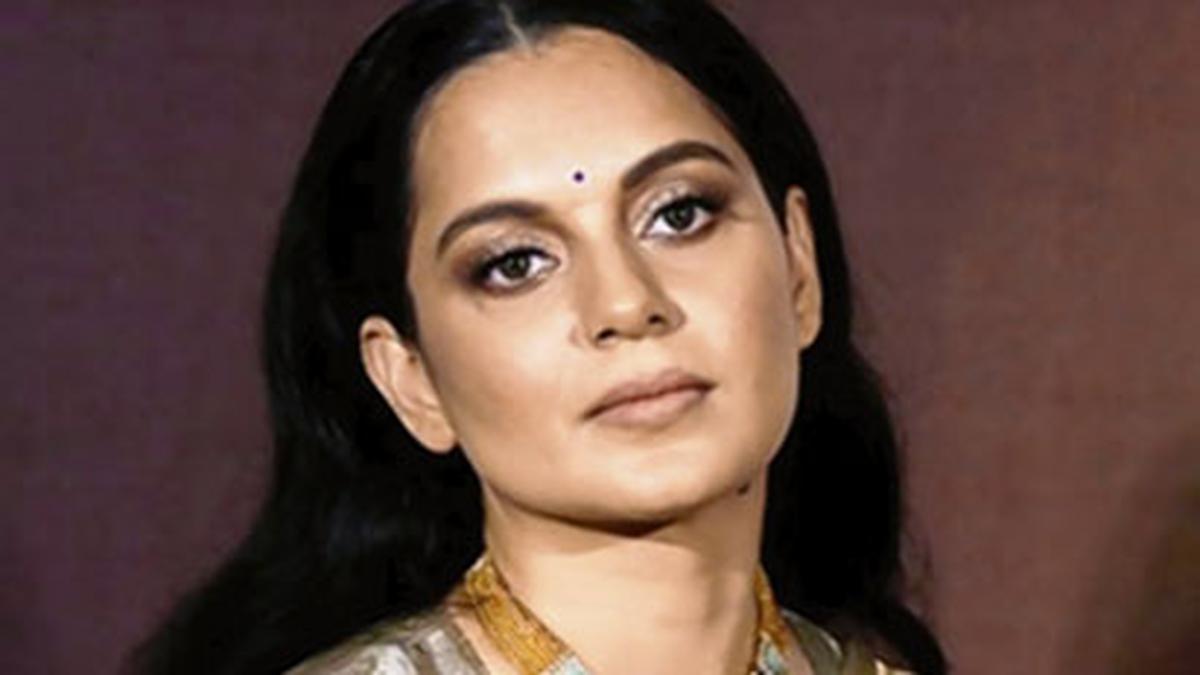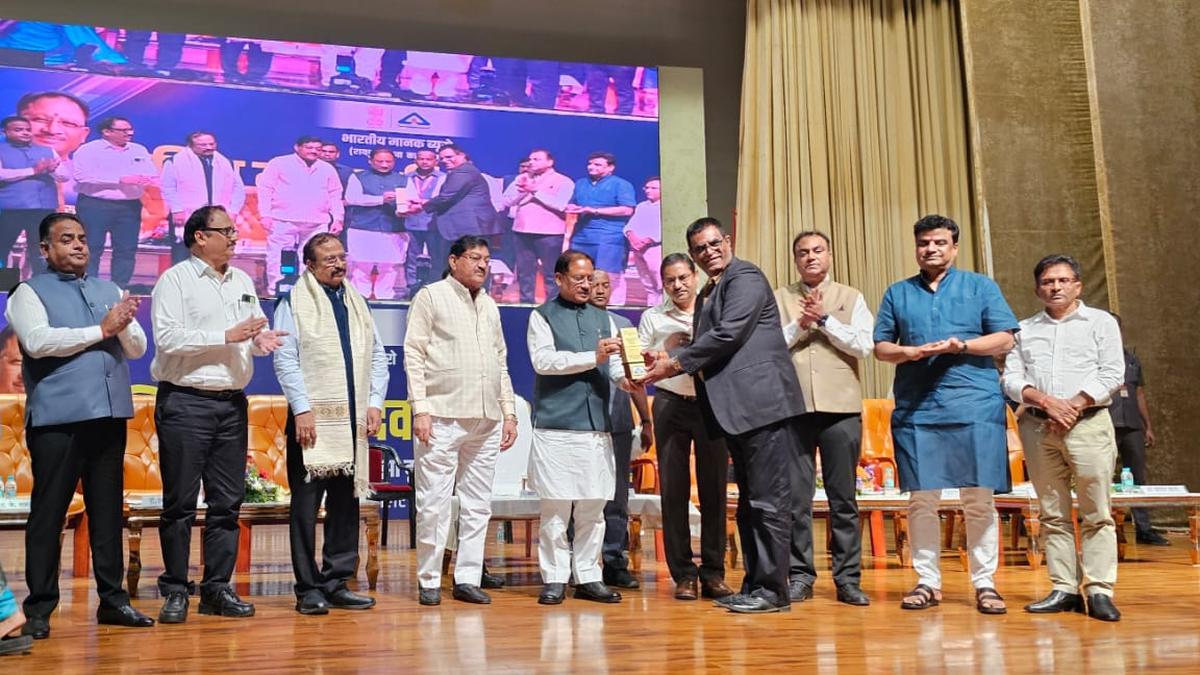In the fast-evolving world of the fine arts, how you adapt to change determines the way forward — being faster and smarter mean a lot, but it is also important to not tamper with time-tested traditions in the name of modernity.
Youth drives ideas, thoughts and the responses to situations, and these determine the character and ethos of everything, including Bharatanatyam.
To understand the mindset and the thinking process, we spoke to four young artistes, who are representatives of the state of the art today.
Among the challenges they face are the intrusion of digital media and the easy access to opinions and debates. Apoorva Jayaraman, Christopher Guruswamy, Navia Natrajan and Sneha Mahesh dwell on what it means to dance in this constantly changing scenario.
Christopher Guruswamy.
| Photo Credit:
S.R. Raghunathan
“The lockdown provided me the time and quietude to step back and revisit some relevant questions. I introspected on my long-term growth and development as an artiste,’’ says Apoorva. “I emerged with greater courage to find my entrepreneurial spirit, bring alive some ideas, and invest in a path that I truly believe in,” she adds.
For Christopher, the highs and lows helped him think deeply and ask himself how he could avoid getting stereotyped.
“I survived, thanks to family support and the healing power of this art form,’ says Sneha. Navia changed her approach to life. “I had to find ways to keep afloat without being inundated by endless opinions and advice.’’
How do they view the current dance scene?
“In the last few years, questions/challenges have come up, but do they propel us to evolve or re-settle into the pre-Covid days? That’s why I feel ‘Navadhisha – New Voices in Dance 2022’, the annual dance conference I convene feels relevant. Young voices are heard and understood,” says Apoorva.
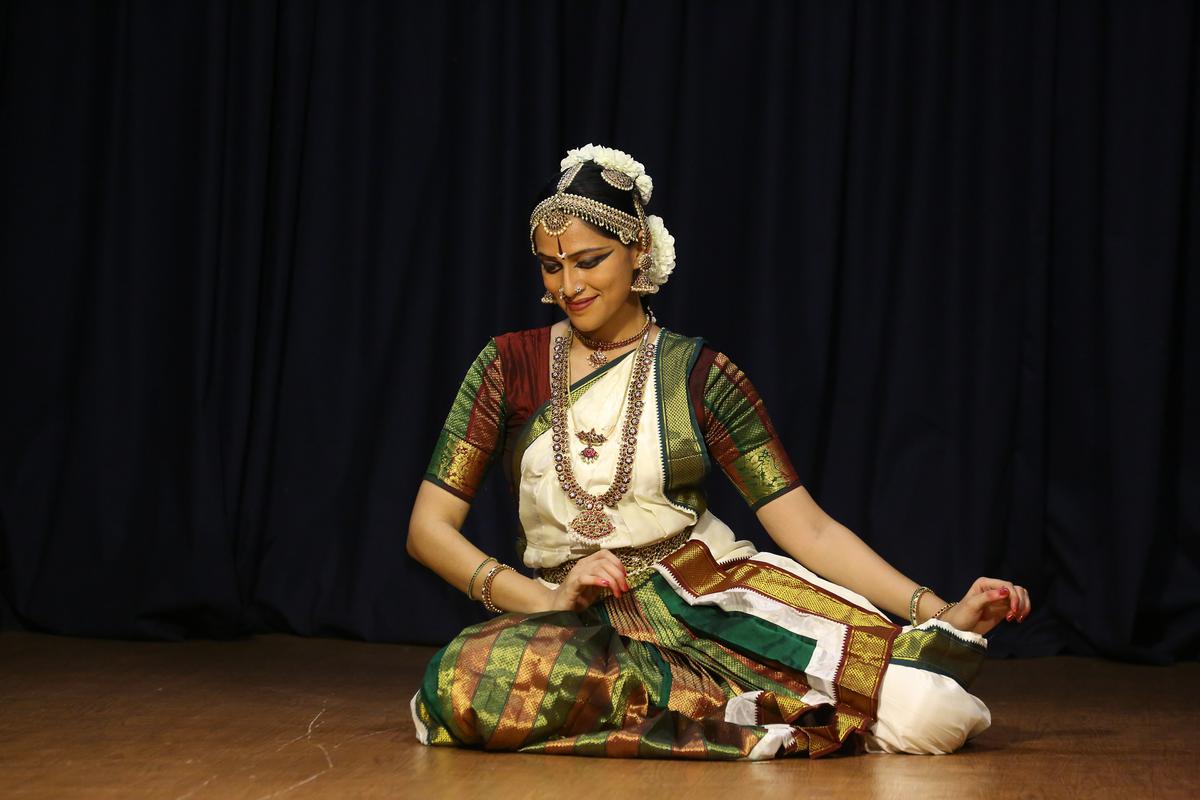
Sneha Mahesh.
| Photo Credit:
Special Arrangement
Christopher is excited about what the future holds. “As a performer, I could not do much, but I learnt to introspect about my artistic practises. This also included the work of hereditary artistes in the revival and reinvention of dance in the 20th Century. I look at the work of artistes such as Mythili Prakash — there is so much exploration happening.”
“I look forward to watching a lot of dance. The dance world now is more dynamic, with exposure, awareness and accessibility,” says Sneha.
Navia feels that one has to go with the flow. “We have become more tech savvy, but it is also a kind of an invasion. There is great exposure, but there is also the danger of mediocrity prevailing,’’ she adds.
What kind of innovations or reinventions have they tried out?
“I founded The Study Room, a virtual space to study Bharatanatyam, in October 2021. I co-founded RootEd Foundation in 2020 with Sumathi Vikram, to work primarily towards audience development for the arts,” says Apoorva.
For Christopher, who was born and raised in Australia, it is authenticity. “It is the innovation that I am trying to build into my dance practice, work and life. It is not easy to be individualistic and hold on to your identity, especially in dance, where we are personifying different characters through compositions and, at times, embodying others’ voices.”
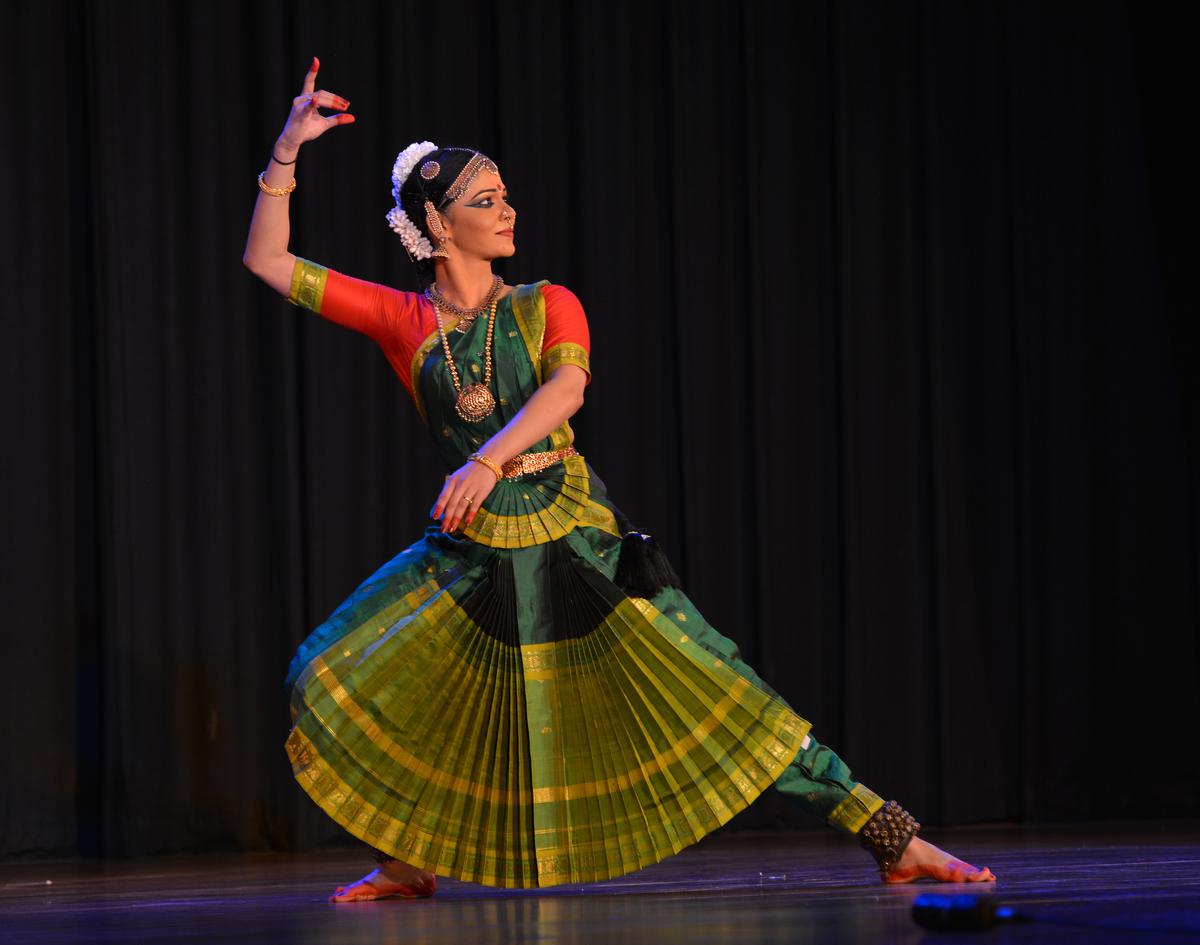
Navia Natarajan.
| Photo Credit:
V.V. Krishnan
Sneha feels she has kept the fundamentals alive, even as she tries to bring in new ideas. Navia has worked on a couple of short pieces arising from observations of the world within and around her — The Rising, an understanding of Varaha, the third incarnation of Vishnu, and Virodhābhāsa – The Paradox, commissioned by the Mandala Arts and Culture, Vancouver. “I don’t know if I can call it innovation, but it has been about reinventing myself.’’
What has been the process of adapting to the digital medium, which seems to have overtaken the art world?
For Apoorva, the digital medium is here to stay. “While it may never be a replacement for in-person human ventures, it will continue to remain an important component of all parts of our lives. The digital space enables audiences to find the art they love, and artistes to reach audiences beyond their geography. It can be an empowering tool. However, I decide between what is my personal space and professional space.’’
Says Christopher, “Working with the camera and online presentations are a very different game; there are advantages and disadvantages. I worked on ‘Nava’ with Vignesh Ishwar for the First Edition Arts’ Blue Planet series. It was a steep learning curve and I enjoyed the experience. I look forward to more digital work, as it breaks the normal ways in which we engage with dance as performers and audience.”
Sneha thinks digital media offers humongous scope to display versatility. “But, it can also be a double-edged sword. I am still learning to keep up with the constant changes in digital media. It has become significantly more important to have your art on Cloud,” she says.
Navia says she understands and appreciates digital platforms, especially after doing a solo production. “Initially, it was difficult simply because I don’t like feeling restricted. I felt very cut off from the outside world. I had to dance to the camera; there was no palpable energy. But as I started befriending the camera, I found myself adapting.’’
In what ways are more youngsters engaging with this art form?
Apoorva says she does not see as much engagement from the younger generation as rasikas, connoisseurs and the audience. “We need to help young people befriend Bharatanatyam. This is exactly the work we set out to do through RootEd Foundation,’’ she adds.
For Christopher, the future of Bharatanatyam looks very different, post-Covid. “There is a decentralisation in exploring avenues with dance. I think that as we relate dance to our own journey, the form, its practice and performance will continue to grow and change. For instance, the conversations in Australia are moving away from the ‘usual’ rhetoric. I’m very excited to see where Bharatanatyam goes in the next decade. I think there is so much young talent coming, and they bring more potential for evolution.”
According to Sneha, the art form is eternal and will continue. Bharatanatyam will find a way to survive. It always has.’’
For Navia, Bharatanatyam will continue to move forward. “It has stood the test of time and will flourish. More and more youngsters are engaging with it. I have a few students and I see the sincerity with which they learn and practice. The art form doesn’t need us; we need it!’’


